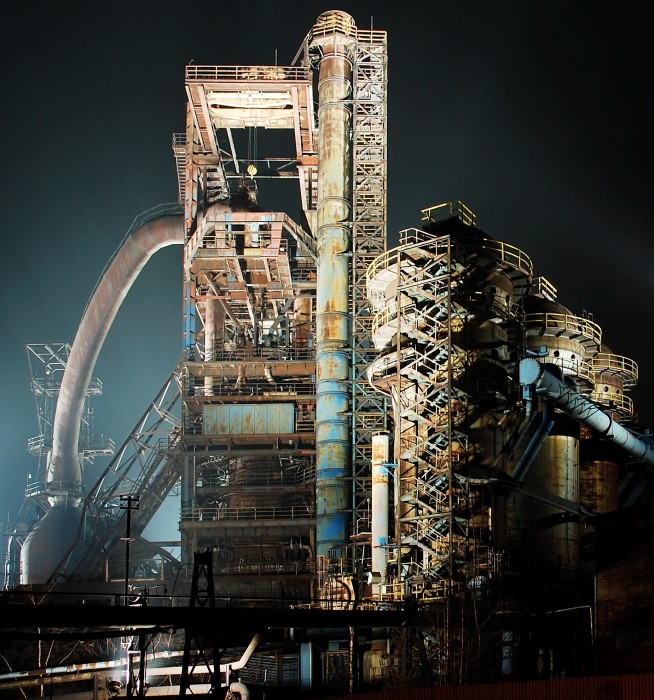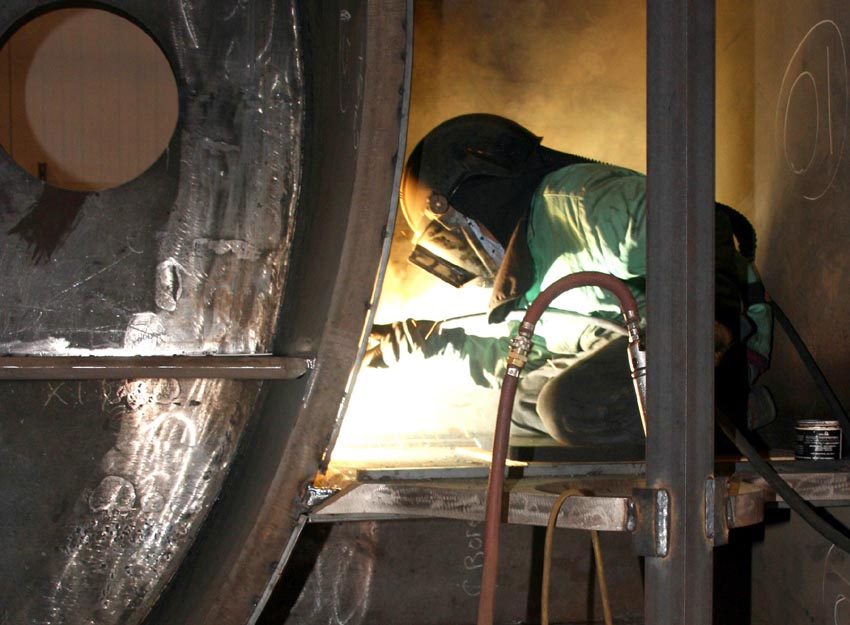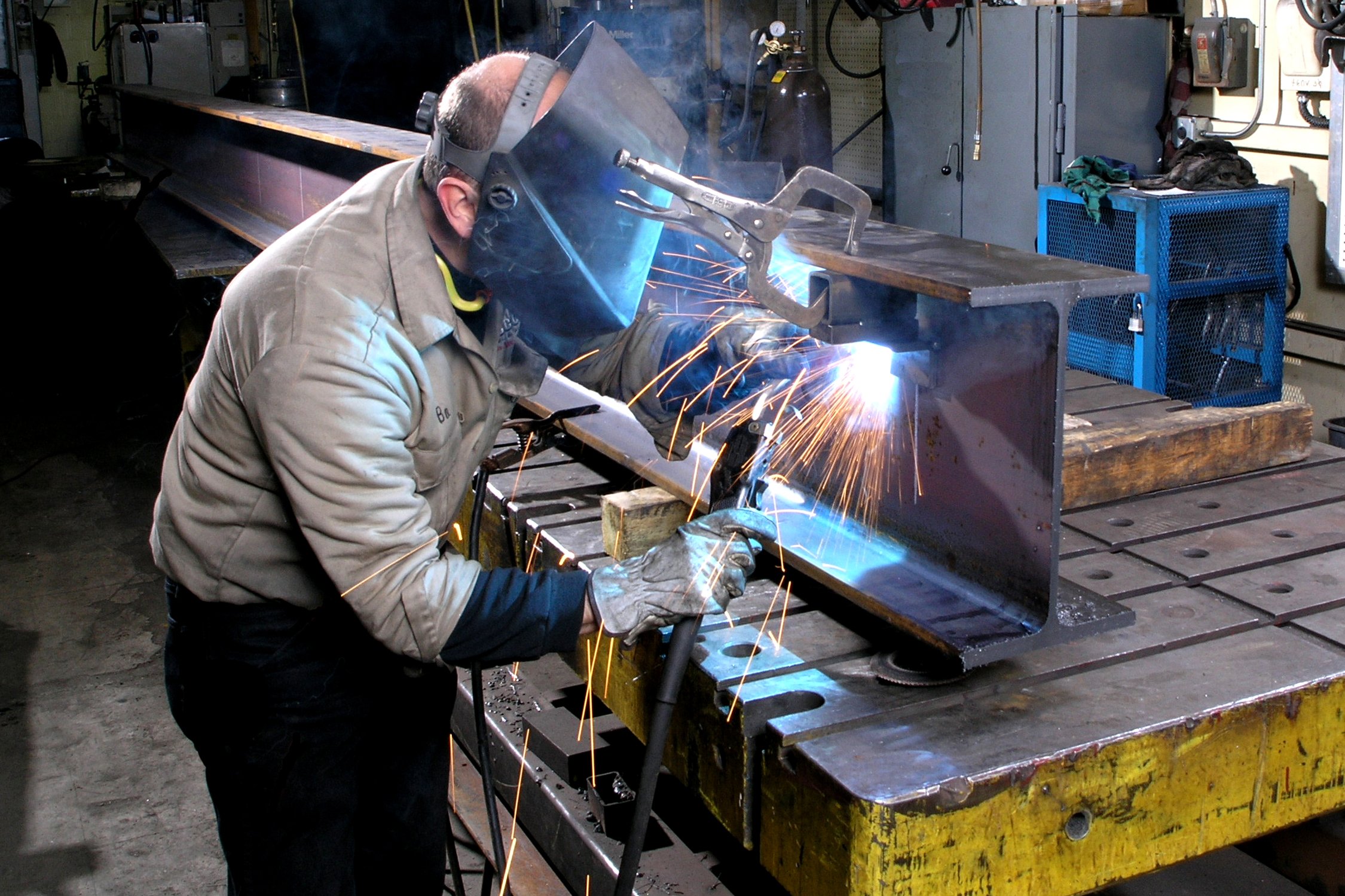Modified “5-55” Vertical-Up Welding Technique Improves Bead Quality and Weld Shape
When welding with an E71T-8 electrode in structural steel fabrication and erection, here is a technique that combines the two competing priorities of being able to pause long enough at the toes to flatten out the weld and bring slag to the surface, and having a small enough weave angle in order to avoid “perforations” and inconsistent leg size.
Posted: March 14, 2012
As I mentioned above, if I used a travel speed that was too fast (or a weave angle that is too dramatic) discontinuities would be formed at the edges of the weld. The weld metal has essentially solidified at the toes of the weld before it could be filled-in, creating a perforated look at the edges. Or the weave angle may have been fine and the weld may have looked OK. But because there was not enough of a “pause” at the toes, there may be trapped slag beneath the weld surface. But pausing for too long was exactly what was requiring me to take a more dramatic weave angle back to the other side.
As you would probably expect, on numerous occasions I have been assigned the task of demonstrating NR-232 in the 3F and 3G vertical-up positions. And admittedly, I wrestled with the conundrum that I described above. I tried crescent weaves, zigzag weaves and pause-and-hold weaves, but none of these allowed me to deposit an aesthetically pleasing weld. And of course, I was doing my level-best to follow the diagrams in the literature – with limited success.
Fortunately, early on in my career I mentioned this in passing to my father, Regis Geisler, who was willing to give me a piece of advice. As most adult sons are when their fathers give them advice, I was compelled to “hear” him because it just so happened that my dad had been a pipeline welder for a large natural gas transmission company and he’d never failed a radiographic X-ray weld inspection in his 15 years on the job. So I decided to “listen” to his words.
The technique that he passed on to me that day was something he called a “5 and 55” weave motion. These numbers are your “speed limits” at the toes of the weld and across the middle of the puddle, respectively. He told me that by slowing down to “5 mph” at the sides and increasing to “55 mph” across the middle, that I would be able to evenly distribute the weld metal. By doing this I would end up with a flatter, less humped-up weld bead.
“But what should my weave technique be?” A crescent weave? A zigzag weave? He astutely said that every electrode is a little bit different, so he asked me to explain to him a little more about NR-232.
I explained to him that the nature of NR-232 – the relatively large puddle and heavy slag – required a welder to actually point downward at the puddle (at a maximum 20 deg angle) in order to avoid striking the slag shelf. It can be described as though the puddle is being “dragged” up the plate. This makes sense, as another well-known expression in the welding industry is that “if you have slag, you drag” the electrode, otherwise you push it (as is generally done in gas-metal arc welding when minimal slag is generated).
He paused for a moment and then began to break down the weave technique question into a matter of perspective. He said that if your viewpoint is one in which your line of sight is 90 deg to the plate (with the weld puddle directly in front of you), you might perceive that you are using a zigzag technique.
But the reality is that when you are welding with NR-232 at a 20 deg drag, you are more than likely going to need to position yourself so that you are actually looking down at the puddle (with your line of sight making a less than 70 deg angle to the plate). From this perspective, you would actually perceive that you are moving side-to-side with a much more subtle upward weave angle.
As I mentioned earlier, for a considerable amount of time I was not able to consistently produce an aesthetically pleasing weld. Sometimes I would, but not really know why. Other times, there would occasionally be gaps or voids at the toes of the weld. But after my conversation with my father, I now realized why . . . I was trying to apply the figures and diagrams that I had read in the literature to my vantage point while actually welding (and looking downward at the puddle).
I became enlightened at that moment and realized that the upward progression in the weld joint could occur at the sidewall, as opposed to making an upward progression when moving across the middle of the puddle. This would allow me to get the electrode back to the other side of the weld before it was too late! I also realized that this would be compatible with my father’s “5 and 55” recommendation.
I decided to modify my technique by adding a slight “up-tick” (to borrow a stock market term) at the toes of the weld at “55 mph” immediately following the “5 mph” speed-zone slow-down when approaching the sidewall. After this quick “55 mph” up-tick at the sidewall, a “55 mph” movement across the puddle to the other side of the weld joint should follow. Please bear in mind that the “55 mph” across the middle is a just a guide. The idea that I’m trying to get across is that the goal for the welder should be to use whatever speed is necessary to move the electrode almost straight across the puddle – just above the slag shelf –so as not to touch it.
This would therefore allow me to combine the two competing priorities stated above: 1) being able to pause long enough at the toes to flatten out the weld and to bring slag to the surface and 2) having a small enough weave angle in order to avoid “perforations” and inconsistent leg size.
Give this “5-55” technique a try the next time you are welding with Innershield® NR-232 and see if it doesn’t improve weld quality and bead shape. Or, if you have a story to share regarding how you learned to weld vertical-up with NR-232, we would love to hear about it.













